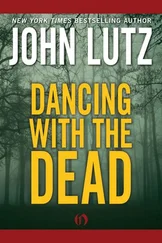In the 1970s the Russians conducted extensive laser beam defense experimentation at their Sary Shagan site in central Asia. Their technology was simply not up to the exacting task then, nor does it appear to be even today. American efforts have shown promise, but to date no system has proved itself against ICBMs. President Reagan was much taken by H-bomb father Edward Teller’s X-ray laser concept: when an atomic device detonated, a laser based in space would emit intense X-rays that could destroy large numbers of attacking warheads in flight. Teller’s concept was highly original, but eventually was abandoned, partly due to arms-control considerations about space weaponry and partly due to technical reservations. All large laser systems raise serious power problems. As noted in chapter 13 the Airborne Laser program was cancelled for this reason. (It used lasers mounted on a 747 aircraft to target missiles.).
The Russians even objected to a midcourse intercept system promised to the Czech Republic and Poland in 2006 by President Bush, claiming that it would also be capable of tracking missiles in boost phase and possibly intercepting them. This gave President Obama a rationale in 2009 to justify unilaterally abrogating the 2006 deal. However, he negotiated not with our Eastern European partners but with Moscow, notifying the affected allied leaders a mere 25 minutes before announcing the swap of a land-based missile defense system for a sea-based one. The Obama administration asserted that the new system is better than the one promised our allies in 2006, but if this were true, why didn’t the United States approach these allies and tell them what a great deal it is? Thus did Cold War arms-control doctrine govern President Obama’s signature arms treaty, and trump concerns of two of our closest allies.
David Hoffman’s The Dead Hand offers a prime example of how hard violations issues are to definitively resolve. The Russians built a massive radar tracking facility at Krasnoyarsk, 1,869 miles inside the Soviet Union, with radar oriented inward. The ABM Treaty limited each side to a single radar protecting the capital, plus perimeter radars at the coastline. This was intended to prevent radars being used for “battle management”: directing large salvos of missiles to thwart a large-scale attack. At the perimeter, radars could take out individual missiles or small salvos but not represent a comprehensive shield. The U.S. maintained that the Krasnoyarsk facility was illegal because it was centrally located and also designed for battle management. On location the U.S. was clearly right. As to the system’s purpose, Hoffman contends it was to plug a hole in Russian defenses, not manage a large-scale defense, and thus a minor violation. In 1989 the Soviets openly admitted that the Krasnoyarsk facility indeed was a violation of the ABM Treaty.
That it took a confession by the Russians to establish a violation showed the infirmity of Cold War arms treaty enforcement. Russia could violate the ABM Treaty with impunity, without fear of being condemned for it. Absent a supervening legal authority capable of rendering judgment, let alone enforcing same, protesting Soviet violations amounted to shouting into the wind.
Thus has missile defense, for 40 years, been held hostage to arms control limits—even after the U.S. exited the ABM Treaty a decade ago.
Technology
Arnold, Lorna. Britain and the H-Bomb (2001).
Bernstein, Jeremy. Nuclear Weapons: What You Need to Know (2008).
Bernstein, Jeremy. Plutonium: A History of the World’s Most Dangerous Element (2007).
Bodanis, David. E=mc 2: A Biography of the World’s Most Famous Equation (2000).
Bryan, Jeff C. Introduction to Nuclear Science (2009).
Bush, Vannevar. Modern Arms and Free Men (1949).
Cohen, Sam. Shame: Confessions of the Father of the Neutron Bomb (2000).
Garwin, Richard L., and Charpak, Georges. Megawatts + Megatons: The Future of Nuclear Power and Nuclear Weapons (2001).
Harford, James. Korolev (1997).
Hoddeson, Lillian, et al. Critical Assembly: A Technical History of Los Alamos During the Oppenheimer Years, 1943–1945 (1993).
Macrae, Norman. John von Neumann: The Scientific Genius Who Pioneered the Modern Computer, Game Theory, Nuclear Deterrence and Much More (1992).
McPhee, John. The Curve of Binding Energy (1974).
Miller, Richard L. Under the Cloud: The Decades of Nuclear Testing (1991).
Muller, Richard. Physics for Future Presidents: The Science behind the Headlines (2008).
Sakharov, Andrei. Memoirs (1990).
Serber, Robert. The Los Alamos Primer (1992).
Stine, G. Harry. ICBM: The Making of the Weapon that Changed the World (1991).
Tsipis, Kosta. Arsenal: Understanding Weapons in the Nuclear Age (1983).
Van Doren, William G. Ivy-Mike: The First Hydrogen Bomb (2008)
Willrich, Mason, and Taylor, Theodore B. Nuclear Theft: Risks and Safeguards (1974).
Wohlstetter, Albert, et al. Nuclear Policies: Fuel without the Bomb (1978).
Wohlstetter, Albert, et al. Swords from Plowshares: The Military Potential of Civilian Nuclear Energy (1979).
Strategy
Aligica, Paul Dragos, and Weinstein, Kenneth R., eds. The Essential Herman Kahn: In Defense of Thinking (2009).
Brodie, Bernard, ed. The Absolute Weapon: Atomic Power and World Order (1946).
Bruce-Biggs, B. Shield of Faith: Strategic Defense from Zeppelins to Star Wars (1988).
Bruce-Briggs, B. Supergenius: The Mega-Worlds of Herman Kahn (2000).
Freedman, Lawrence. The Evolution of Nuclear Strategy (3rd ed., 2003).
Friedman, George. The Next 100 Years: A Forecast for the 21st Century (2009).
Kahn, Herman. On Escalation: Metaphors and Scenarios (1965).
Kahn, Herman. On Thermonuclear War (1960).
Kahn, Herman. Thinking about the Unthinkable in the 1980s (1984).
Krepinevich, Andrew F. 7 Deadly Scenarios: A Military Futurist Explores War in the 21st Century (2009).
Marshall, Andrew W., Martin, J. J., and Rowen, Henry S. On Not Confusing Ourselves: Essays on National Security Strategy in Honor of Albert and Roberta Wohlstetter (1991).
Zarate, Robert, and Sokolski, Henry D., eds. Nuclear Heuristics: Selected Writings of Albert and Roberta Wohlstetter (2009).
Arms Control
Albright, David. Peddling Peril: How the Secret Nuclear Trade Arms America’s Enemies (2010).
Kaufman, Robert Gordon. Arms Control during the Pre-Nuclear Era: The United States and Naval Limitation between the Two World Wars (1990).
Newhouse, John. Cold Dawn: The Story of SALT (1989 ed.).
Nitze, Paul H., et al. The Fateful Ends and Shades of SALT (1979).
Reed, Thomas C. At the Abyss: An Insider’s History of the Cold War (2004).
Reed, Thomas C., and Stillman, Danny B. The Nuclear Express: A Political History of the Bomb and Its Proliferation (2009).
Sokolski, Henry, et al. Pakistan’s Nuclear Future: Reining in the Risk (December 2009).
Taubman, Philip. The Partnership: Five Cold Warriors and Their Quest to Ban the Bomb (2012).
Wohlstetter, Roberta. “The Buddha Smiles”: Absent-Minded Peaceful Aid and the Indian Bomb , Monograph 3, Final Report to the Energy Research and Development Administration (May 1977, rev. November 1977).
History
Ambrose, Stephen E. Eisenhower: Soldier and President (1990).
Читать дальше












